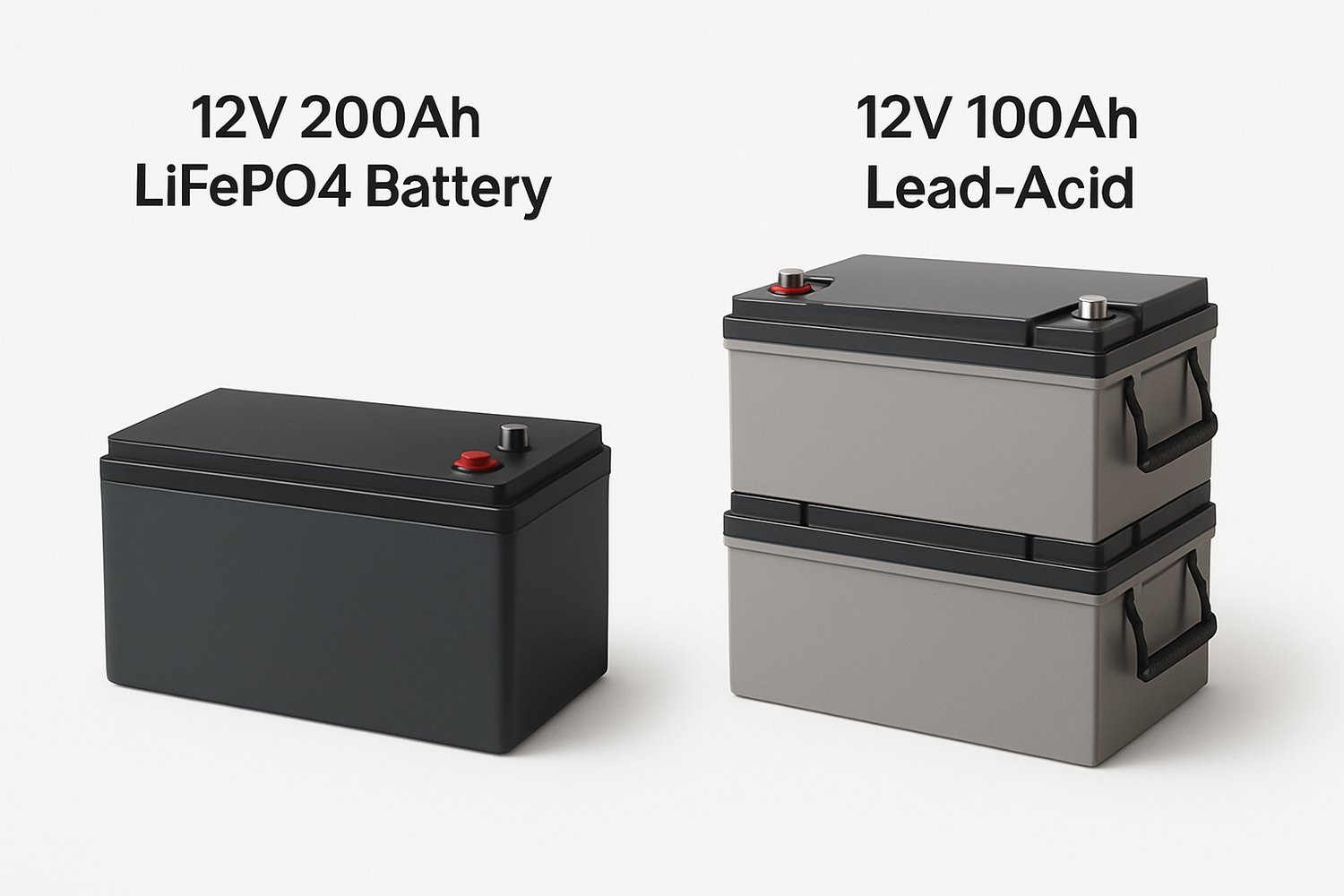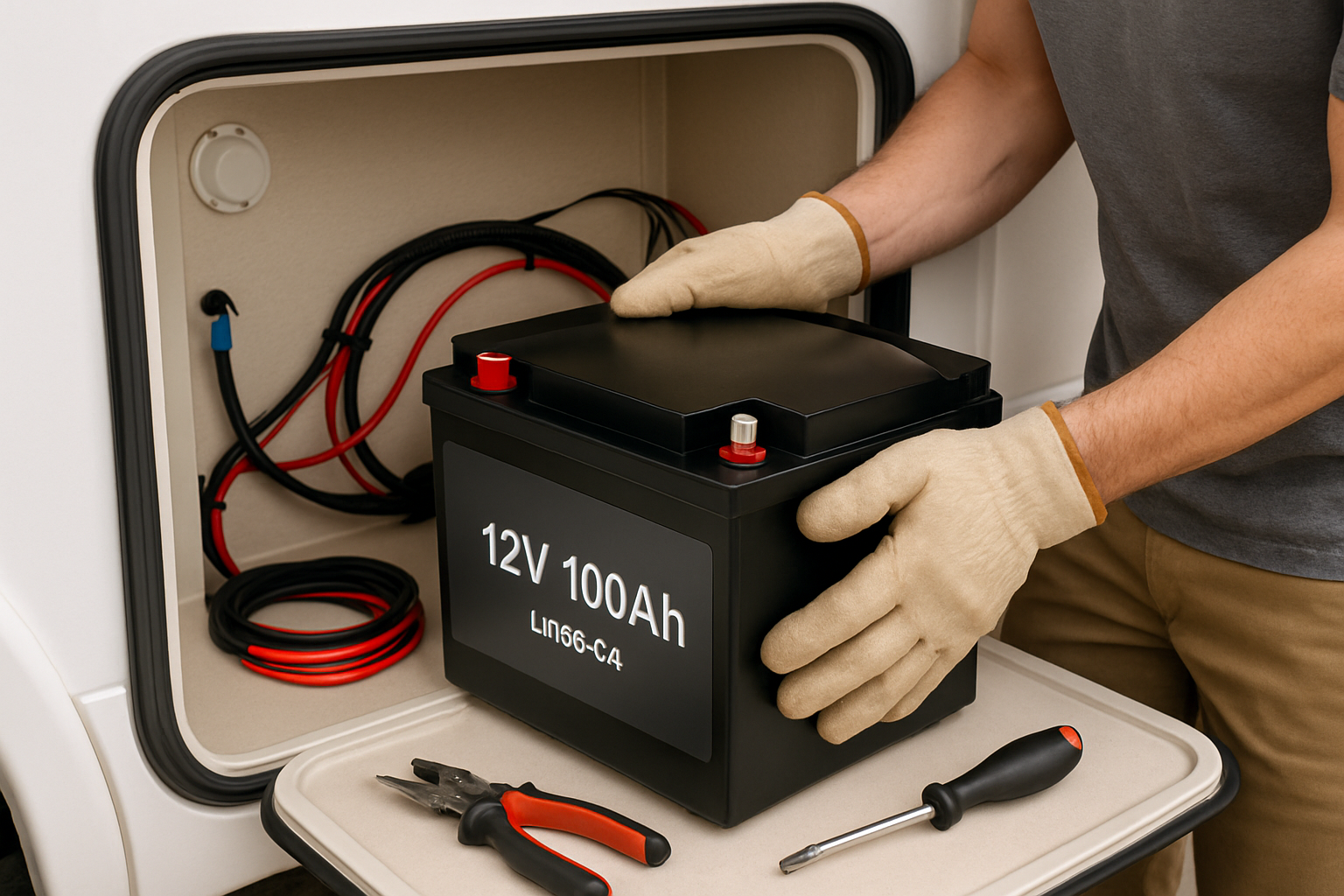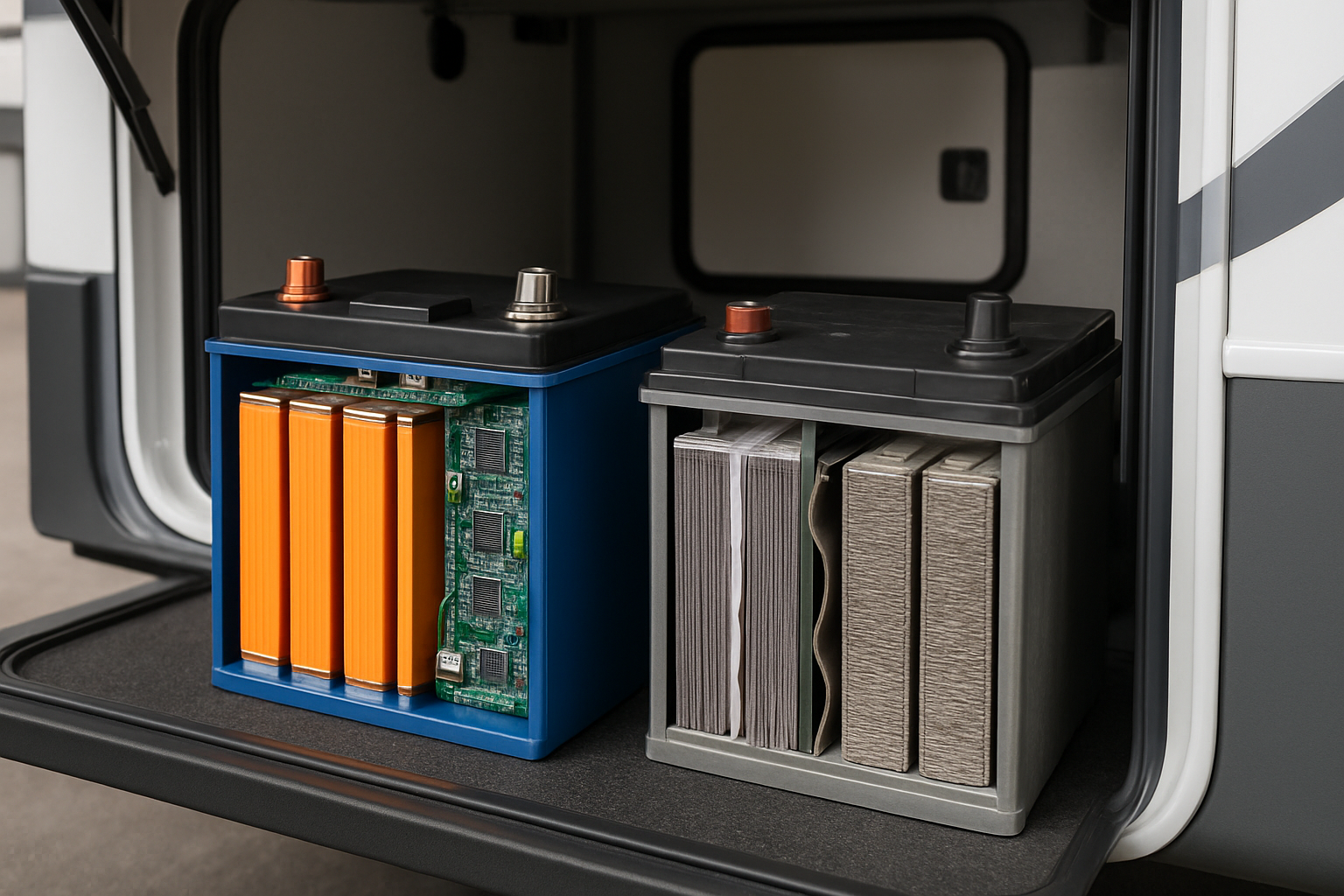Choosing the right power source is fundamental to the recreational vehicle experience. A robust electrical system provides the freedom to travel without being tied to shore power. As lithium batteries become more common, many RV owners ask if a 200Ah lithium battery is the right choice or simply too much. The answer depends entirely on your specific power consumption and travel habits. Proper RV lithium battery sizing is about finding a balance between capacity, cost, and practicality.
Understanding Your RV's Real Power Needs
Before deciding on any RV battery capacity, you must first understand how much energy you actually use. A precise calculation prevents you from overspending on capacity you don't need or, conversely, running out of power when you least expect it.
Conducting a Personal Energy Audit
An energy audit involves cataloging every electrical device in your RV and estimating its daily usage. List everything from the refrigerator and lights to laptops and coffee makers. Multiply each device's power draw (in watts) by the number of hours you use it per day to find its daily consumption in watt-hours (Wh). Summing these values gives you your total daily energy requirement.
| Appliance | Power Draw (Watts) | Daily Hours of Use | Daily Energy (Watt-hours) |
|---|---|---|---|
| LED Lights (x4) | 12W | 4 | 48Wh |
| Water Pump | 60W | 0.5 | 30Wh |
| MaxxAir Fan | 30W | 8 | 240Wh |
| 12V Compressor Fridge | 55W | 8 (33% duty cycle) | 440Wh |
| Laptop Charging | 65W | 3 | 195Wh |
| Phone Charging (x2) | 10W | 2 | 20Wh |
| Total Daily Need | 973Wh |
The Difference Between Peak and Continuous Loads
Your power system must handle two types of loads. Continuous loads are appliances that run for extended periods at a steady rate, like a refrigerator or fan. Peak loads are short, high-power draws required to start motors or heating elements, such as in a microwave or air conditioner. Your battery's Battery Management System (BMS) must be rated to handle these peak surges without shutting down.
Factoring in Lifestyle: Weekend Warrior vs. Full-Time RVer
Your travel style significantly influences your required RV battery capacity. A weekend user with basic needs—lights, water pump, and phone charging—may find a 100Ah battery sufficient. A full-time RVer running a refrigerator, computers, and kitchen appliances will have much higher daily energy demands, making a 200Ah lithium battery RV setup a more practical choice. The more days you plan to spend off-grid, the more stored energy you will need.
Decoding the 200Ah Lithium Battery
A 200Ah rating tells you more than just the size. It represents a significant amount of usable energy, especially with advanced LiFePO4 (Lithium Iron Phosphate) technology.
What '200Ah' Actually Represents
Amp-hours (Ah) measure a battery's charge capacity. A 200Ah battery can theoretically supply 20 amps of current for 10 hours. To make this figure more useful for an energy audit, convert it to watt-hours (Wh) by multiplying amp-hours by voltage. For a nominal 12.8V LiFePO4 battery, a 200Ah capacity equals 2,560Wh of energy. Unlike lead-acid batteries, which should only be discharged to 50%, lithium batteries can be safely discharged to 80-90% or more. According to a study from the International Renewable Energy Agency, a high depth of discharge tolerance is a key characteristic of lithium-ion batteries for energy applications. This high tolerance means you get to use nearly all of that 2,560Wh.
Key Advantages of Lithium (LiFePO4) Technology
A 12V lithium battery for RV use offers substantial benefits over traditional technologies. LiFePO4 batteries typically provide 3,000 to 5,000 charge cycles, lasting many times longer than their lead-acid counterparts. They are also significantly lighter, reducing your RV's overall weight. Furthermore, they maintain a stable voltage output through most of the discharge cycle, ensuring your appliances run efficiently. Their inherent chemical stability also makes them a very safe option for mobile applications.
Sizing Beyond Capacity: C-Ratings and Discharge Rates
The C-rating indicates the maximum rate at which a battery can be discharged. A 1C rating on a 200Ah battery means it can safely deliver 200 amps continuously. This is crucial for powering high-draw appliances like a microwave or an induction cooktop through an inverter. Always check that the battery's continuous and peak discharge ratings meet the demands of your most powerful devices.
Scenarios: When is a 200Ah Battery the Right Fit?
A 200Ah system is an excellent foundation for energy independence, but it's not a universal solution. The key is matching the capacity to your specific use case.
The Ideal User: Off-Grid Enthusiasts and Power Users
A 200Ah lithium battery is perfect for RVers who spend extended time off-grid or use a wide range of modern electronics. If your setup includes a 12V compressor refrigerator, a coffee maker, a microwave, and you work remotely with laptops and monitors, this capacity provides a comfortable energy buffer. It allows you to operate these conveniences for one to three days without needing to recharge, depending on usage and weather.
When 200Ah Might Be Excessive
If your RV trips are typically short stays at powered campsites, and your off-grid needs are limited to basic functions like LED lights and a water pump, a 200Ah battery may be more than you need. In this case, a smaller 100Ah battery could serve your needs adequately and be a more economical choice. The goal is to invest in a system that aligns with your actual, not imagined, usage.
System Integration: Solar Panels and Inverters
A battery is just one part of the system. To effectively recharge a 200Ah lithium battery, a properly sized solar array is recommended. A common guideline is to have at least 400 to 600 watts of solar panels to ensure a full recharge even on less-than-perfect sunny days. Additionally, your inverter must be sized to handle the combined load of all AC appliances you wish to run simultaneously. The International Energy Agency notes that the pairing of improved battery performance with cost reductions has made lithium-ion technology a strong choice for integrated energy systems.
Making a Smart Investment in Your RV Power System
Viewing a battery purchase as a long-term investment helps clarify the decision-making process. Consider not just the initial price but also the performance, lifespan, and flexibility it offers.
Calculating Long-Term Value
While the upfront cost of a LiFePO4 battery is higher than lead-acid, its extended lifespan often results in a lower total cost of ownership. With a cycle life that can exceed ten times that of a deep-cycle lead-acid battery, you will likely never need to replace it during the lifetime of your RV. This durability provides significant long-term value.
Scalability and Future-Proofing
A 200Ah lithium battery RV setup offers excellent scalability. You can start with a single 200Ah unit and, if your needs grow, easily add another in parallel to double your capacity to 400Ah. This approach allows your power system to evolve with your travel style, making it a future-proof investment in your energy independence.
Performance Metrics to Consider
When selecting a battery, look beyond the amp-hour rating. Key metrics like charge efficiency, self-discharge rate, and operating temperature range are critical for real-world performance. For a detailed breakdown of these factors, the Ultimate Reference for Solar Storage Performance offers valuable insights into how different variables affect a battery's output and longevity.
Final Considerations Before You Decide
So, is 200Ah too much for an RV? For a minimalist weekend camper, perhaps. For a serious boondocker or full-time traveler, it is often the perfect starting point for a reliable and capable power system. The best approach is to complete your energy audit, consider your travel ambitions, and choose a capacity that provides a comfortable buffer without being unnecessarily large. The right 12V lithium battery for RV use is the one that empowers your adventures and gives you confidence in your off-grid capabilities.
Disclaimer: This article provides general guidance and is not a substitute for professional electrical advice. Sizing and installing an RV electrical system involves risks, and all work should be performed by a qualified professional.
Frequently Asked Questions
How many solar panels do I need for a 200Ah lithium battery?
To effectively charge a 200Ah (2560Wh) lithium battery, a solar array of 400 to 600 watts is generally recommended. This size helps ensure you can fully recharge the battery in a single day of good sunlight, providing enough power for overnight use and accounting for cloudy days.
Can I replace my lead-acid batteries directly with a 200Ah lithium battery?
In many cases, yes, but some system components may need upgrading. You should verify that your RV's converter or charger has a lithium-compatible charging profile. LiFePO4 batteries require specific charging algorithms to ensure their health and longevity. If your current charger is not compatible, you will need to replace it.
How long will a 200Ah lithium battery last?
A high-quality LiFePO4 battery is typically rated for 3,000 to 5,000 charge cycles. If you cycle the battery once per day, this translates to a lifespan of 10 years or more, which is significantly longer than the 2-5 year lifespan of typical lead-acid batteries.
Is it better to have two 100Ah batteries or one 200Ah battery?
Both options provide the same total capacity. A single 200Ah battery simplifies wiring and takes up less space than two separate batteries. It also has a single BMS to manage the cells. Two 100Ah batteries can offer redundancy; if one fails, you still have the other. However, they require more complex wiring (in parallel) and careful management to ensure they remain balanced. For simplicity and performance, a single 200Ah battery is often the preferred choice.





Leave a comment
All comments are moderated before being published.
This site is protected by hCaptcha and the hCaptcha Privacy Policy and Terms of Service apply.